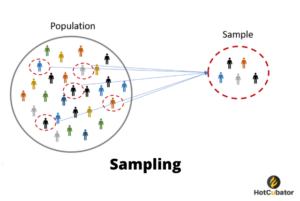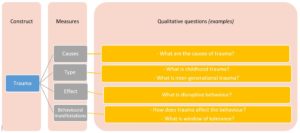
A meta-analysis is a quantitative method of synthesizing empirical evidence across a collection of related studies. During the last three decades the use of meta-analysis has increased significantly. It is an advanced technique used to combine the results of a number of studies in order to gain a better overall picture of the underlying relationships between variables in relation to a particular topic. Generally, a meta-analysis combines effect sizes from different studies to ascertain the true effect size in the wider population. To estimate the effect size several techniques are applied, e.g. Pearson product moment correlation coefficient (r=), Cohen’s effect size index (d=), odds ratio, risk rates, risk differences. These different techniques have the same fundamental goal, which is to ascertain the observed outcomes from selected studies.
Meta-analysis technique is widely used in clinical research. It is especially useful when results from several studies disagree with regard to magnitude or direction of effect. Meta-analysis also sheds light on empirical generalizability of previous findings and can determine whether different moderators affect the associations found. It offers advantages over conventional synthesis analyses because it includes statistical analyses that detect outcomes or relationships that are obscured in other approaches. In comparison to narrative reviews, meta-analysis is less biased because it systematically quantifies the relationship between certain variables. Additionally it compares outcomes across different contextual characteristics. The strength of meta-analysis lies in combining numerical results from a few or many studies.
The strength of meta-analysis is that it ascertains the effect size or the observed difference of variables in a unique and consistent format which is summarized later. The summarizing of effect size is known as standardization. The standardization of effect size is the key to a meta-analysis review which permits meaningful numerical comparison and analyses across studies. There are many different types of effect size measurement depending on the different research situations. Each effect size type may also have multiple methods of computation.
Typically, meta-analysis employs different steps to reach an expected conclusion where results are summarized and explained. The following steps are popularly adopted by researchers to conduct the meta-analysis approach:
- Define the independent and dependent variables of interest.
- Search the studies in a systematic way, to find all the studies that have to be analyzed.
- Document each article’s methodology and results very carefully, assessing how independent and dependent variables were operationalized and measured.
- Examine the variability among the obtained effect sizes informally with graphs and charts.
- Combine the effects using several measures of their central tendency
- Examine the significance level of the indices of central tendency
- Summarize the results of the analysis.
References:
Field, A. P. (2003). The problems in using fixed-effects models of meta-analysis on real-world data. Understanding Statistics: Statistical Issues in Psychology, Education, and the Social Sciences, 2(2), 105-124.
Hunter, J. E., & Schmidt, F. L. (2004). Methods of meta-analysis: Correcting error and bias in research findings: SAGE Publications, Incorporated.
Orlitzky, M., & Benjamin, J. D. (2001). Corporate social performance and firm risk: A meta-analytic review. Business & Society, 40(4), 369-396.
Orlitzky, M., Schmidt, F. L., & Rynes, S. L. (2003). Corporate social and financial performance: A meta-analysis. Organization studies, 24(3), 403-441.
Ostrom, A. L., Bitner, M. J., Brown, S. W., Burkhard, K. A., Goul, M., Daniels, V. S., & Demirkan, H. (2010). Moving Forward and Making a Difference: Research Priorities for the Science of Service. Journal of Service Research, 13(1), 4-36.
Rosenthal, R., & DiMatteo, M. R. (2001). Meta-analysis: Recent developments in quantitative methods for literature reviews. Annual review of psychology, 52(1), 59-82.








